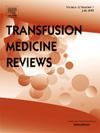Modulating recombinant clotting factor X to improve clot-dissolution
IF 2.5
2区 医学
Q2 HEMATOLOGY
引用次数: 0
Abstract
Introduction
Heart attacks and strokes are the leading causes of death worldwide, most often caused by clots that block the flow of blood. The favoured clot-dissolving (i.e. thrombolytic) drug is a recombinant (r) version of tissue plasminogen activator (tPA). The high rtPA dose required for clot lysis causes clinical hemorrhage in up to 6% of patients, resulting in part from systemic, rather than clot-localized, enzyme activity. The Pryzdial lab has discovered a thrombolytic function for the plasma protein, clotting factor X (FX), which acts non-enzymatically to accelerate tPA. Here we present a recombinant variant of FX (rFXic) with two key characteristics: an inhibitory (i) mutation that blocks the intrinsic clotting function, and a cleavage-resistant (c) mutation for increased half-life of tPA-accelerating function in plasma. We hypothesize that rFXic is thrombolytic and has superior safety compared to rtPA.
Methods
Wild type (rFXwt), single mutant (rFXi and rFXc), and double mutant (rFXic) FX were produced in HEK 293 cells and purified via conformational affinity chromatography. Their plasmin-cleavage profile and prothrombin clotting times functionally confirmed the successful insertion of mutations. Calcium-dependent binding to anionic phospholipid was tested to evaluate proper post-translational modification and clot-localizing function of the γ-carboxyglutamic acid (Gla)-domain, which is known to enable binding of FX to anionic phospholipid-containing membrane and fibrin. Acceleration of rtPA activity was evaluated using a plasmin-selective chromogenic substrate. In a mouse model of carotid artery occlusion, Doppler ultrasound recordings of blood flow were used to measure the ability of rFXic to affect clot dissolution.
Results
Compared to rFXwt, which was cleaved by plasmin into the predicted rFXβ and FXγ forms of FX, proteolysis of rFXic was limited to production of rFXβ. This is expected to stabilize thrombolytic activity in plasma. In contrast to rFXwt, rFXic had undetectable clotting activity in reconstituted FX-deficient plasma. Neither mutation impacted calcium-dependent binding to anionic phospholipid. In vitro, rtPA generated 10-fold more plasmin in the presence of rFXic than rFXwt, indicative of thrombolytic acceleration by the former. In mouse models of thrombosis, rFXic decreased the thrombolytic dose of rtPA by at least 50% as an adjunctive therapeutic but did not promote thrombolysis without rtPA.
Conclusion
These data support the hypothesis that rFXic has thrombolytic activity in combination with rtPA. By lowering the therapeutic dose of rtPA, rFXic could be used as an adjunctive therapeutic to reduce the bleeding risk of thrombolysis. Next, we will assess the quantitative efficacy of rFXic in vivo and therapeutic safety ex vivo, and anticipate advocating for rFXic as both an effective and safer alternative to monotherapeutic rtPA.
调节重组凝血因子X促进凝块溶解
心脏病发作和中风是世界范围内导致死亡的主要原因,最常见的原因是血栓阻塞血液流动。最受欢迎的溶凝(即溶栓)药物是组织型纤溶酶原激活剂(tPA)的重组(r)版本。血块溶解所需的高rtPA剂量导致高达6%的患者临床出血,部分原因是全身而非血块局部的酶活性。Pryzdial实验室发现血浆蛋白凝血因子X (FX)具有溶栓功能,它非酶促tPA加速。在这里,我们提出了FX的重组变体(rFXic)具有两个关键特征:抑制性(i)突变阻断了内在的凝血功能,以及抗切割(c)突变增加了血浆中tpa加速功能的半衰期。我们假设rFXic具有溶栓作用,与rtPA相比具有更高的安全性。方法在HEK 293细胞中制备野生型(rFXwt)、单突变型(rFXi和rFXc)和双突变型(rFXic) FX,并通过构象亲和层析纯化。它们的纤溶蛋白切割谱和凝血酶原凝血时间功能性地证实了突变的成功插入。我们测试了钙依赖性与阴离子磷脂的结合,以评估γ-羧基谷氨酸(Gla)结构域的翻译后修饰和凝块定位功能,已知γ-羧基谷氨酸(Gla)结构域能够使FX与阴离子磷脂膜和纤维蛋白结合。使用血浆浆蛋白选择性显色底物评估rtPA活性的加速。在小鼠颈动脉闭塞模型中,使用血流多普勒超声记录来测量rFXic影响血栓溶解的能力。结果与rFXwt相比,rFXic的蛋白水解仅限于产生rFXβ, rFXwt被纤溶酶切割成rFXβ和FXγ形式的FX。这有望稳定血浆中的溶栓活性。与rFXwt相比,rFXic在重组的fx缺陷血浆中具有不可检测的凝血活性。这两种突变都不影响钙依赖性与阴离子磷脂的结合。在体外实验中,rtPA在rFXic的作用下产生的纤溶蛋白比rFXwt多10倍,表明前者加速了溶栓。在小鼠血栓模型中,作为一种辅助治疗,rFXic使rtPA的溶栓剂量降低了至少50%,但没有促进rtPA的溶栓。结论这些数据支持rFXic与rtPA联合具有溶栓活性的假设。通过降低rtPA的治疗剂量,rFXic可以作为一种辅助治疗来降低溶栓出血的风险。接下来,我们将评估rFXic的体内定量疗效和体外治疗安全性,并预测rFXic作为单一治疗rtPA的有效和更安全的替代方案。
本文章由计算机程序翻译,如有差异,请以英文原文为准。
求助全文
约1分钟内获得全文
求助全文
来源期刊

Transfusion Medicine Reviews
医学-血液学
CiteScore
11.60
自引率
0.00%
发文量
40
审稿时长
21 days
期刊介绍:
Transfusion Medicine Reviews provides an international forum in English for the publication of scholarly work devoted to the various sub-disciplines that comprise Transfusion Medicine including hemostasis and thrombosis and cellular therapies. The scope of the journal encompasses basic science, practical aspects, laboratory developments, clinical indications, and adverse effects.
 求助内容:
求助内容: 应助结果提醒方式:
应助结果提醒方式:


